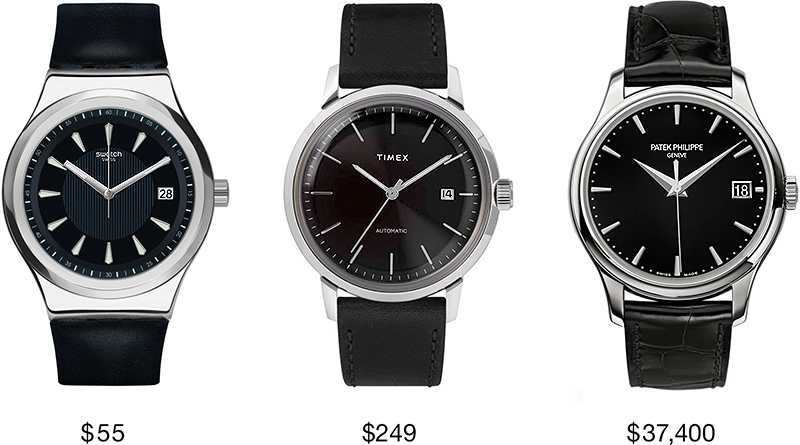Time for the Sublime

Snow Storm – Steam-Boat off a Harbour’s Mouth
One of my current projects has me lying awake thinking about design, technology, and culture even more than usual. Last night, this runaway train of thought took me through 3 concepts, the law of diminishing returns, the law of accelerating returns, and the sublime.
These concepts derive from the traditionally separate fields of economics, technology, and philosophy but I’m wrestling with them together because they seem connected and I’ve also been reflecting on another theme lately, holism.
The Law of Diminishing Returns
This law is defined as “A point at which the level of benefit gained (output) is less than the amount of resources invested (input).”
In our late capitalist economy, this law pinpoints the upper limit of what a market will bear – the point past which time, attention, and other resources are wasted because too few customers are willing to pay for better.
The Post-World War II economic expansion, and globalized supply chains caused quality and price expectations to plummet as markets were flooded with ever cheaper industrial, often disposable versions of what had previously been enduring, crafted goods.
The point of diminishing returns drifted down and to the left for decades as business raced to the bottom in search of scale and profit. Consumers – with more than a little help from Madison Avenue – happily provided the demand needed to keep this shiny new flywheel of prosperity spinning.
I’m deliberately not getting into the grave environmental downside of this trend here but The Story of Stuff by Annie Leonard provides a clear, impassioned overview of this process and its consequences.
The post-war era wasn’t without its champions of excellence, however. Charles and Ray Eames famously sought to create “the best for the most for the least.” Today, the eye-watering prices of their iconic designs cast some doubt on Herman Miller’s commitment to that vision but the Eames’ influence and inspiration live on.

The Law of Accelerating Returns
Coined in 2001 by firebrand futurist Ray Kurzweil, this law states that “Technological change is exponential, contrary to the common-sense ‘intuitive linear’ view.” Learning more about this will inspire optimists and terrify pessimists. I happen to skew optimistic so I find it pretty inspiring.
The law of accelerating returns provides lift under the curve of diminishing returns. New, more efficient technologies create the opportunity for greater output (quantity and/or quality) for a similar amount of input.
In some cases, we leverage this opportunity to elevate the overall quality of the things we create or to account more broadly for their context and cost. In most cases, however, we still seem to use it to minimize the input required to hit the capitalist sweet spot of speed, scale and profitability.
Ikea has leveraged these laws to realign the Eames’ vision with the 21st century’s point of diminishing returns. I don’t expect Ikea to adopt the slogan “Good enough for now for the most for the least.” but it feels pretty accurate.

These laws lower our expectations on two dimensions, quality and time. The law of diminishing returns causes us to think of things as replaceable commodities and the law of accelerating returns means those commodities only need to last through one ever-shorter cycle of obsolescence.

These cycles of commoditization and obsolescence are making many products seem like really expensive bananas – fresh today, brown tomorrow. This helps explain why consumers are stepping off the upgrade treadmill in greater numbers and why many companies are transitioning from selling products to renting them through more profitable and predictable subscription schemes. Why buy a banana when you can subscribe to a banana service? Many capitalists and techno-optimists are breathless about the possibilities.
“…we will continue to take solid things—an automobile, a shoe—and turn them into intangible verbs. Products will become services and processes.”
– Kevin Kelly, The Inevitable.
Of course, digital products are leading the charge toward access over ownership. These products services are now being updated continuously rather than periodically. On one hand, it’s great to know that smart people are constantly working to improve things but there is also something disquieting about this level of ephemerality. It can feel like waking up to discover that your favorite blue shirt turned green overnight and for some reason now has an extra pocket.
The Sublime
Let’s dust off our right brains.
The sublime can be defined as “the quality of greatness beyond all possibility of calculation, measurement, or imitation.” This concept is deeply at odds with the zeitgeist:
- It sounds old-fashioned, snooty, romantic, and impractical.
- It’s expensive, time-consuming, uncertain, unquantifiable, and inherently niche.
- Um, hello! Calculation, measurement, and imitation are precisely how things get made. Now, go back to art school, we’re working here.
But the sublime is what inspires us to dream, care, reach for greatness and sacrifice to the point that the grown-ups think we’re mad. I believe taking some time to reflect on the sublime can provide a useful third point of reference, alongside the hyper-rational law of diminishing returns and the opportunity-creating law of accelerating returns.
This reflection can help temper our destructive focus on speed and short-term, incremental wins, inclining us instead toward quality and a more mindful, comprehensive view of the things we create and the consequences of creating them.
Mario Costa has done some of my favorite thinking on the sublime, distinguishing between the natural sublime of the 18th century, the industrial-metropolitan sublime of modernity, and today’s technological sublime.
Of course, it’s very hard to make a compelling business case for pursuing the sublime. It simply carries too much risk. However, history shows us that once a dedicated, visionary creator has managed to bootstrap the sublime into being, the market usually responds favorably. If we really build it, they will come.
“Quality isn’t something you lay on top of subjects and objects like tinsel on a Christmas tree. Real Quality must be the source of the subjects and objects, the cone from which the tree must start.”
– Robert Pirsig, Zen and the Art of Motorcycle Maintenance
If they haven’t already, some well-intentioned person will probably cook up a methodology or “Sublimity Canvas™” to democratize the sublime and make it repeatable but they’ll be missing the point. The sublime is a philosophical and ethical disposition, not a skill to be learned which is why it’s so hard for us to get our science-saturated, mass market capitalist minds around.

It’s tempting to conflate the sublime with inaccessible, elitist luxury because of the vast “unnecessary” time and expense it usually requires. I believe we do ourselves a disservice by thinking this way.
“Some people think luxury is the opposite of poverty. It is not. It is the opposite of vulgarity,”
– Coco Chanel
I’m not arguing that we should all pivot to an uncompromising pursuit of perfection but having more people with that kind of audacious vision, ambition, and exquisite madness in the mix can inspire us to push back against compromise, tell Accounting to fuck off, and move a step or two closer to answering the question, “Exactly how good can this be?”
Let’s use this golden age of opportunity to do that.